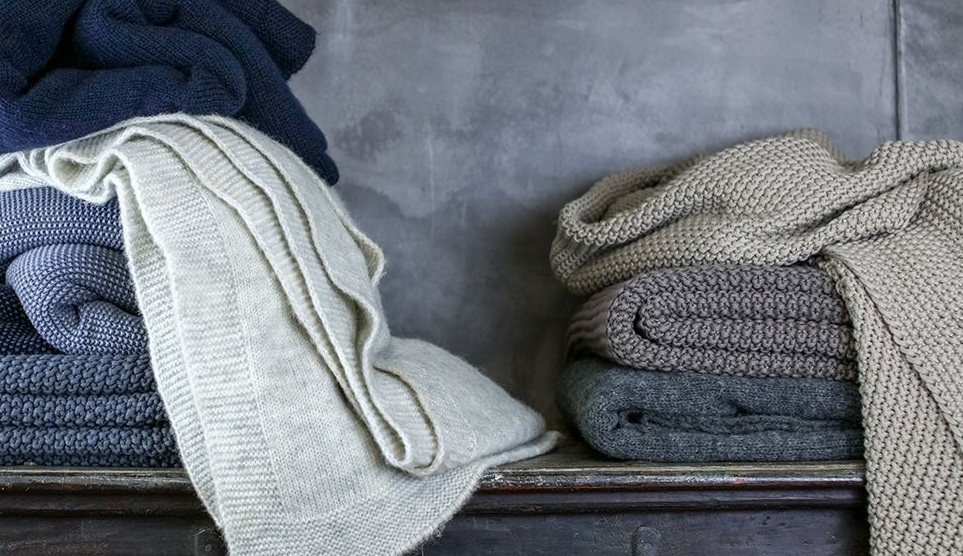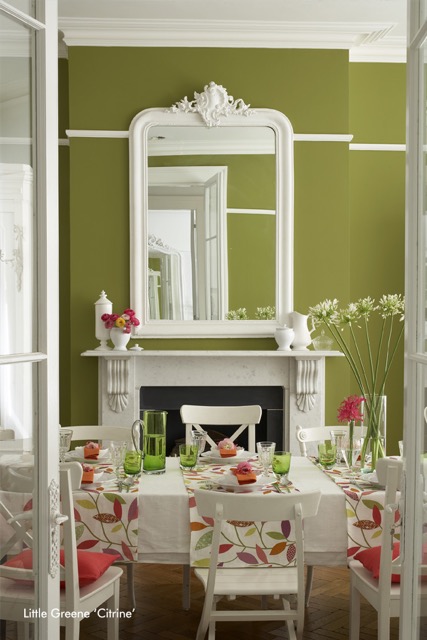SEASON'S SENSES
When I first read about Hygge I connected with it immediately as I have a very similar philosophy when it comes to design. Our homes are sanctuaries, our safe places where we can be our most relaxed and comfortable selves. They are necessary retreats from the outside world and this is never more true than in the winter when our natural instincts encourage us to hibernate…
The Danish philosophy of Hygge, pronounced ‘hoo-guh’, has been gaining popularity here in the UK for the last couple of years. I see the word everywhere online and in the shops. The term loosely means ‘coziness’ however this is not meant in an external or material way. It is not as simple as a few knitted blankets. Hygge is more of a psychological sense of coziness, a feeling of warmth - a calm, good feeling in the soul. The feeling you get when you read a book in front of a fire with a hot chocolate, or share a night in with a bottle of wine between friends. When I first read about Hygge I connected with it immediately as I have a very similar philosophy when it comes to design. Our homes are sanctuaries, our safe places where we can be our most relaxed and comfortable selves. They are necessary retreats from the outside world and this is never more true than in the winter when our natural instincts encourage us to hibernate.
The process of designing a space that allows for this ‘cozy’ environment goes beyond aesthetic. It involves all the senses. By considering the experience of a room on multiple levels it is possible to create an atmosphere conducive to deep relaxation and calm.
TEXTURE & NATURE
Texture and natural materials are key. During the winter we tend to spend more time indoors and less time outside. Therefore it is really important to bring nature indoors in any way we can. The warmth of wooden furniture, both visually and to the touch, is noticeably different to that of glass or metal. Collect some pine cones to decorate with and of course, for those celebrating - put up the Christmas tree! (I love to get a Norway spruce as it not only looks beautiful but also smells stunning).
Combining thick-knit and fine-knit natural fiber blankets in different neutral tones is an easy way to introduce texture to a room. Fleece rugs are also a great way to incorporate a different natural texture into a space.
Photo via The Fabulous Fleece Company
Photo source unknown
Photo via Nkuku.com
LIGHT
The days are shorter and our hours of daylight are often dimmed by thick layers of grey cloud. It can feel oppressive and gloomy. I combat this by trying to find whatever natural light that I can. When the sun is hard to find, I turn to fire. The warm glow from a candle or an open fire has an innate comforting quality. Hurricane lanterns are a great way to house candles of different shapes and sizes in a safe way if you don’t have a working fireplace or wood burner. Candleholders and lanterns with cutouts are also a very effective way to introduce texture through shadow. I remember seeing some wall lanterns similar to the candleholders below for the first time when I visited Morocco a few years ago. During the day I had no idea what they were, they seemed like a pretty plain wall decoration. But at night, when they were lit, it was like magic. The patterns of light created by something so simple were stunning.
Photo via Zenza
SMELL
Smell is so important when it comes to the experience of a room, especially over the winter period. The smells of an open fire, freshly cut pine and gingerbread baking in the oven evoke feelings of warmth and comfort (and hunger!). If you’re not a fan of hoovering up the needles of a Norway spruce, or if you don’t celebrate Christmas, an easy way to introduce the fresh smell of the outdoors is to add sprigs of pine or cedar to a winter garland or flower arrangement. I also suggest investing in a good quality scented candle or reed diffuser with notes of wood and spice.
Photo via Shibang Designs
My main piece of advice when designing a home for winter is to avoid anything artificial, anything that doesn’t feel, smell or look real. Focus on atmosphere, nature and warmth and you can’t go too far wrong!
GOING GREEN
Every Spring, I drive my kids nuts as I comment on the fresh greenery that emerges almost overnight. There is something very exciting about seeing nature coming back to life and breathing again. Pantone made this ‘Greenery’ their Colour of the Year 2017 describing the colour as...
Every Spring, I drive my kids nuts as I comment on the fresh greenery that emerges almost overnight. The foliage bursts with such vibrancy that I can’t help but point it out in wonderment. There is something very exciting about seeing nature coming back to life and breathing again. Pantone made this ‘Greenery’ their Colour of the Year 2017 describing the colour as ‘A refreshing and revitalizing shade, symbolic of new beginnings’. I find it fascinating that this is a trend we can always rely on when we need it most.
In times of uncertainty we turn to nature for support and reassurance. Over the last 27 years in business I’ve seen it happen multiple times - during the recession in the 90’s, the beginning of the Iraq war and the Great Recession. In 2016, we had the double whammy of Brexit and the US election. When tired, polarized and overwhelmed, green symbolizes hope, rebirth and health. Nature is the one thing that unites us all, it is constant, truthful and strong. It persists.
The importance of green, especially in 2017, also feels like a backlash to technology and the media. People want to connect in a real way, with each other and with their surroundings. There’s a desire to go back to basics. To what is simple and honest.
This ‘Greenery’ trend applies not only to the colour schemes of 2017 but also to design practice and materials. For the last decade there has been a strong drive towards sustainable design solutions. However, with efforts to prevent climate change coming under threat, eco-friendly design appears to be an urgent priority this year. Consumers are becoming more aware and sustainable design is becoming more sophisticated. Projects of every scale can now balance aesthetic and the environment.
Scandinavian and Japanese interiors are currently very on-trend. They both look to nature for their inspiration and have long been associated with relaxation and serenity. Our homes are our safe places, where we can retreat from the outside world. It is becoming more and more important for these spaces to contribute to our well-being and the use of natural, renewable materials benefits us both mentally and economically. Studies have shown that the use of exposed wood in design schemes can help relieve stress and reduce fatigue. In Scandinavian design it is used to add warmth, both in appearance and as an insulator, to beat the winter blues. There has also been research connecting the durable and timeless qualities of these materials to people's levels of comfort. Our day to day lives are so far from our natural environment that the use of real stone worktops and real wood floors reconnects and grounds us.
Earthy greens and browns contrasted with fresh whites and paired with natural woods help the mind relax and work very well for spaces like home offices and bathrooms. All paint colours in the imagery of this blog post are available at Saal Design.
TIPS FOR GOING GREEN AT HOME…
Plants at home improve air quality and are very beneficial. They will also add that fresh ‘Greenery’ zing to your room! Bamboo Palm, Spider Plants and Boston Fern’s are great purifiers and humidify the air, while Peace Lilies are great for removing mold from spaces like bathrooms and other damp areas. Air plants are my current fascination. Aesthetically, they are beautiful and are extremely easy to incorporate into any scheme or space. Plus, they don’t require soil and don’t don’t attract any bugs!
LED lighting has advanced hugely over the last few years and is now an extremely efficient and economical design solution. They use up to 90% less energy than an incandescent or halogen bulbs of equivalent brightness. Lighting is available in a whole range of colour temperatures and can be dimmed to create the perfect atmosphere. Candles, after daylight, are the most natural sources of light. They are a very simple and effective way of bringing nature and warmth into your home.
Avoid volatile organic compounds (VOC) that are health hazards. These can be found in various paints, household products, furniture, carpets etc. Luckily, all our paint suppliers at Saal Design only offer low VOC content products.
Choose real and sustainable materials. When choosing new furniture or when redesigning opt for the real or sustainable material over the synthetic. Although they may be more expensive at the time of purchase, they will be more durable and offer you and your home far more in the long run.
For any questions or enquiries regarding the paint products featured in the imagery of this post please don't hesitate to contact us: info@saaldesign.co.uk or 01926 334 556.
Images supplied by Little Greene


























The bedroom is one of the most important rooms in the house. Recent studies have shown that people are starting to spend more time in their bedrooms than in their living rooms. It is a room that can have a big impact on our physical and mental well-being and it is important that this is taken into account during the design process...